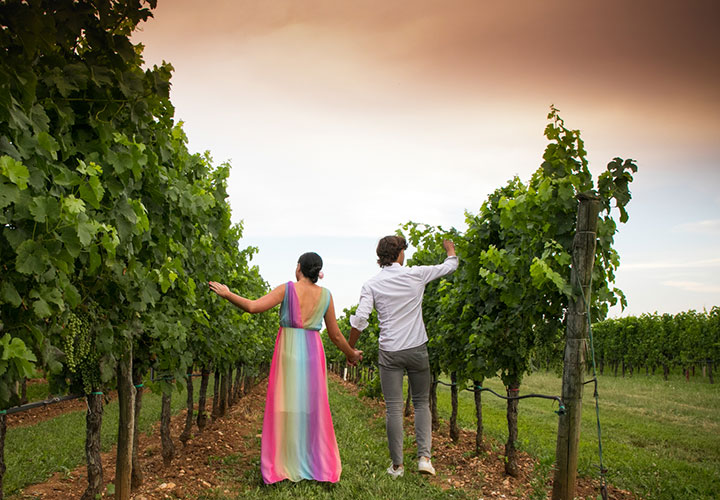Between the provinces of Trieste and Gorizia, you can do Wine Tasting Carso DOC. The vineyards are located at an altitude ranging from 100 to 400 m. A local characteristic are the dry stone walls that delimit the plots, built over the years with stones removed from the land to make it suitable for cultivation. The soil along the coast is silty-clayey, with typical terraces, called “pastini“, strips of cultivated land supported by dry stone walls and with slopes of even more than 60%.

>> choose your Winery
The Carso or Kras DOC controlled designation of origin dates back to the 1980s. Its specifications are geared towards limited, high-quality production. The vines used to produce the wines of the denomination are seven white grapes and five red grapes.
Together they give rise to thirteen types of wine, some of which also in the “riserva” version. In the Carso, the soil is characterized by “red soil”, clay layers that cover the underlying calcareous soil by just a few centimeters, also called “sinkholes”. The climate of the Carso is between the Mediterranean and the pre-Alpine continental climate. Slopes of the slopes play an important role here, creating very different microclimate situations. The modest rainfall, the strong permeability of the soil and the strong winds (Bora) mean that the water deficit is quite high, especially in the summer.
In the Roman era, the economy of the regions of Carso and Istria was centered on the cultivation of vines, olives and sheep farming. Even in the early Middle Ages, vines characterized the Carso-Istrian environment and in the following centuries, wine was used as a form of tribute by local rulers.
The “Trieste Statutes”, or rather the laws with which local administrators tried to protect wine both in terms of quantity and marketing. First World War caused the total devastation of the territory and from that catastrophe began the recovery that led to today’s excellence
The wines of the Carso DOC
present particular organoleptic characteristics that are certainly due in large part to the territory, but without neglecting the importance of the human factor. The territory gives the white wines their beautiful straw yellow color, which sometimes has more or less intense golden reflections.
I vini rossi hanno un colore rosso rubino intenso talvolta violaceo, al naso mostrano una netta personalità, dalla struttura e dall’acidità buona, talvolta marcata come nel vitigno Terrano. Le uve vengono raccolte ben mature e la fermentazione a contatto delle bucce si prolunga anche per una settimana. Per i vini da invecchiamento la scelta delle uve è più accurata e il tempo di fermentazione sulle bucce viene prolungato di alcuni giorni. I vini più invecchiati presentano profumi terziari più o meno complessi a seconda del tempo di permanenza nelle botti di legno.

Book your Wine tasting
The Cellars are ready to welcome you to make you live an unforgettable experience. Therefore you can choose various types of tasting also and above all based on your needs. The Wine tasting Carso are an unforgettable wine tourism and food and wine experience. We look forward to seeing you in the Cellar.
Cellars of the other regions of Italy:
